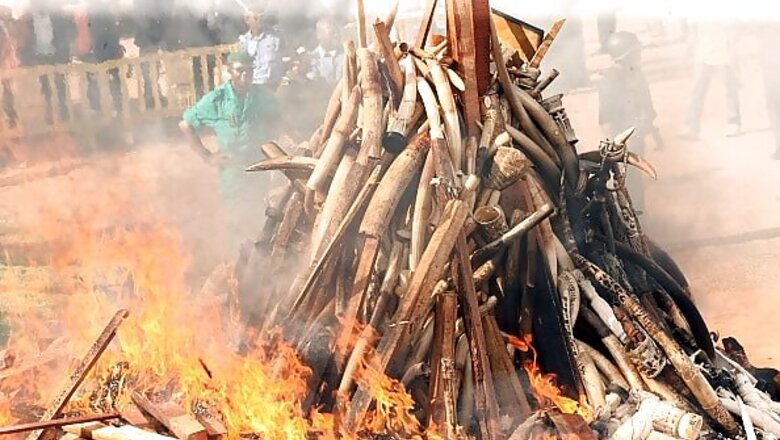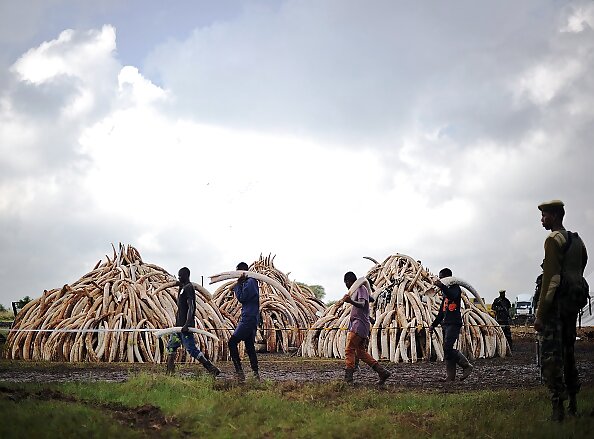
views
Eleven giant pyres of tusks, and another of rhino horns, are arranged in a semi-circle now expected to burn for days in Nairobi's national park.
Huge white clouds of smoke spiralled high into the sky, with thousands of litres of diesel and kerosene injected though steel pipes buried in the ground leading into the heart of the pyramids to fuel the blaze.
President Ali Bongo from Gabon, who lit one of the pyres, spoke of the "massacre" of forest elephants in central Africa, and said he backed moves to close all sale of ivory.
"Unless we take action now we risk losing this magnificent animal," Bongo said at the ceremony, telling poachers he was "going to put you out of business, so the best thing you can do is to go into retirement now."
Africa is home to between 450,000 and 500,000 elephants, but more than 30,000 are killed every year on the continent to satisfy demand for ivory in Asia, where raw tusks sell for around $1,000 (800 euros) a kilo (2.2 pounds).
The pyres contain some 16,000 tusks and pieces of ivory.

Kenya has a long history of ivory burnings, spearheading a wider movement of public demonstrations across the world, but nothing on this scale before.
On the black market, such a quantity of ivory could sell for over $100 million, and the rhino horn could raise as much as $80 million.
Rhino horn can fetch as much as $60,000 per kilo -- more than gold or cocaine.
But Kenyatta dismissed those who put cash value on the ivory
"For us, ivory is worthless unless it is on our elephants," Kenyatta said.



















Comments
0 comment